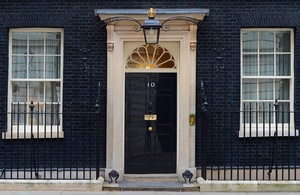Incoming OSCE Chair-in-Office presents priorities for 2023: UK statement to the OSCE
Thank you, Mr Chair. On behalf of the UK, I warmly welcome you, Minister Osmani to the Permanent Council. Thank you for outlining the priorities for North Macedonia’s time as OSCE Chair-in-Office during 2023. Please be assured of the UK’s full support for your intention to focus on genuine dialogue and for the agenda you have set out today.
The UK remains a strong proponent of the OSCE. The OSCE’s concept of comprehensive security must remain at the organisation’s heart and form the basis of everything we do. We have met on an almost weekly basis for the last six months in the shadow of Russia’s unprovoked invasion of Ukraine. We fervently hope that the Russian Government will have seen sense and the war in Ukraine will have ended by the time you assume the role of Chair in Office. But whatever happens we believe that we need and will need the OSCE more than ever as we tackle the many challenges facing us all.
We welcome your intention to provide political leadership across all three dimensions. We note that protracted conflicts and progress towards peace will be topping your agenda. Russia’s ongoing aggression against Ukraine, not only continues to pose the most serious threat to the OSCE area but also continues to blight the lives of Ukrainians caught up in the conflict. This must command our full attention and we should be giving our full support to the OSCE structures which contribute towards the peaceful resolution of this devastating conflict.
We note that women throughout the OSCE region have been and are disproportionately negatively affected by conflict and instability. We share your determination to harness effective multilateralism in response. It is vital to ensure women’s full, meaningful and effective participation across our work in all three dimensions and to understand the gender based impact of conflict.
We agree that conventional arms control and confidence and security building measures remain crucial for security in the OSCE area. Russia’s invasion of Ukraine has shown that the measures were not the issue, but that political will was. The UK remains committed to all confidence and security building measures, including the Vienna Document, provided that all participating States fully abide by their commitments under international law, including the Helsinki Final Act and UN Charter.
Mr Chair – transnational threats, including transnational organised crime and cyber security, will remain security challenges in the OSCE area to which we need comprehensive, holistic responses. We also remain committed to strengthening economic resilience, through improved governance and cracking down on corruption which undermines our societies.
In the economic and environmental dimension, Russia’s invasion has shown the interconnectedness of energy, food, infrastructure and climate to our collective security, and how the deliberate actions by one country can cause devastating ripples across the world. The UK supports the OSCE’s efforts to improve the region’s energy security. Furthermore, we must not forget climate change and look forward to increased cooperation in meeting commitments under the Stockholm Decision.
We welcome your intention to initiate a broad debate on the necessity of increased engagement on the respect for fundamental human rights not just because of the ongoing situation sparked by Russia’s invasion of Ukraine, but also in light of the COVID-19 pandemic and its legacy. Your commitment to providing political support to the autonomous institutions will be invaluable to ensure that all participating States implement, and uphold, our human dimension commitments. With democracy and human rights under attack in the OSCE region, we must continue to focus on the most egregious violations of our OSCE commitments using all available OSCE tools and mechanisms. The Moscow Mechanism has served us well in exposing abuses and violations.
We share your determination to support relevant policies to fight any kind of discrimination and intolerance. The UK was honoured to host the International Conference on Freedom of Religion or Belief in London in July where participants shared practical lessons on how to protect the freedom of religion or belief. We look forward to continuing this work with you.
Your Excellency, dear Minister, in conclusion, the OSCE remains a critical multilateral institution for European and Euro-Atlantic security. At this vital time for our shared security, you can rely on the strong support of the UK in your search for solutions and progress and we wish you and your very capable team here in Vienna all the best as you prepare for your time as Chair-in-Office.
Thank you.
